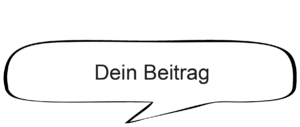Everyone will be art: Unterschied zwischen den Versionen
Glanz (Diskussion | Beiträge) Markierungen: mobile edit mobile web edit |
Glanz (Diskussion | Beiträge) Keine Bearbeitungszusammenfassung |
||
| Zeile 8: | Zeile 8: | ||
[[Datei:Flagge_United_Kingdom_GB_MOOC_it.png|50px|center|link=Everyone will be art]] | [[Datei:Flagge_United_Kingdom_GB_MOOC_it.png|50px|center|link=Everyone will be art]] | ||
{{:Zitat|In the future, everyone will be world-famous for 15 minutes.|Quelle=Andy Warhol}} | |||
Version vom 16. Februar 2022, 11:28 Uhr
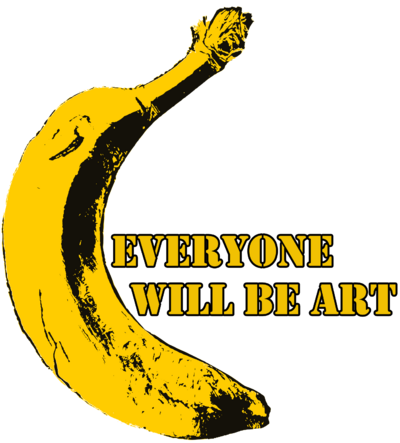



Everyone will be art
Einführung
Zitieren ist ein wichtiger Bestandteil des wissenschaftlichen Arbeitens und Schreibens. Es ermöglicht, die Quellen anzugeben, aus denen Informationen stammen. Dies gibt deinen Arbeiten Glaubwürdigkeit und zeigt, dass du dich gründlich mit dem Thema auseinandergesetzt hast. In diesem aiMOOC lernst du, wie man richtig zitiert und warum es so wichtig ist.
Warum zitieren?
Zitieren hat mehrere Gründe:
- Es zeigt, dass du deine Informationen aus glaubwürdigen Quellen hast.
- Es ermöglicht anderen, deine Quellen zu überprüfen.
- Es vermeidet Plagiat.
- Es gibt deinem Text eine Struktur und macht ihn nachvollziehbar.
Arten des Zitierens
Es gibt verschiedene Arten, wie man zitieren kann:
Direktes Zitat
Hierbei übernimmst du wörtlich einen Textteil aus einer Quelle. Dieser muss in Anführungszeichen gesetzt werden und die Quelle muss genau angegeben werden. Beispiel: "Das Zitieren ist wichtig, um die Herkunft von Informationen anzugeben" (MOOCit).
Indirektes Zitat
Hierbei gibst du den Inhalt einer Quelle mit eigenen Worten wieder. Auch hier muss die Quelle genau angegeben werden. Beispiel: Es wird betont, wie wichtig es ist, die Quellen seiner Informationen anzugeben (MOOCit).
Regeln beim Zitieren
- Immer die genaue Quelle angeben.
- Bei direkten Zitaten den Originaltext nicht verändern.
- Zitate immer in Anführungszeichen setzen.
- Bei indirekten Zitaten sicherstellen, dass der Sinn des Originals nicht verfälscht wird.
Häufige Fehler beim Zitieren
- Quelle nicht oder falsch angeben.
- Direkte Zitate ohne Anführungszeichen.
- Den Sinn eines Zitats beim Umschreiben verändern.
Tipps zum richtigen Zitieren
Zitieren kann auf den ersten Blick kompliziert erscheinen, besonders wenn man es noch nie zuvor gemacht hat. Doch mit ein paar einfachen Tipps und Tricks kann jeder lernen, korrekt zu zitieren. Hier sind einige Tipps, die dir helfen können:
- Verstehe den Zweck des Zitierens: Bevor du anfängst zu zitieren, solltest du verstehen, warum du es tust. Zitieren hilft, deine Quellen nachzuweisen und gibt deinem Text Glaubwürdigkeit. Es zeigt auch, dass du respektvoll mit dem geistigen Eigentum anderer umgehst.
- Wähle den richtigen Zitierstil: Es gibt verschiedene Zitierstile wie APA, MLA, Chicago und viele mehr. Je nach Fachgebiet und Publikation kann ein bestimmter Stil bevorzugt werden. Finde heraus, welcher Stil für deine Arbeit am besten geeignet ist und halte dich konsequent daran.
- Zitiere immer, wenn du unsicher bist: Wenn du dir nicht sicher bist, ob du eine Information zitieren solltest oder nicht, dann zitiere lieber. Es ist besser, zu viel als zu wenig zu zitieren.
- Verwende Zitierhilfen: Es gibt viele Online-Tools und Softwarelösungen, die dir beim Zitieren helfen können. Diese können besonders nützlich sein, wenn du viele Quellen hast.
- Halte deine Quellen organisiert: Wenn du recherchierst, halte alle deine Quellen an einem Ort. Dies wird das Zitieren später erleichtern.
- Vermeide Plagiate: Plagiat ist das Verwenden von jemand anderem Arbeit ohne angemessene Anerkennung. Es ist nicht nur unethisch, sondern kann auch schwerwiegende akademische und berufliche Konsequenzen haben.
- Überprüfe deine Zitate: Bevor du deine Arbeit einreichst, überprüfe alle deine Zitate. Stelle sicher, dass sie korrekt formatiert sind und dass alle Informationen korrekt sind.
- Zitiere primäre Quellen, wenn möglich: Primäre Quellen sind die ursprünglichen Quellen einer Information. Sie sind in der Regel zuverlässiger und genauer als sekundäre Quellen.
- Sei konsistent: Egal welchen Zitierstil du verwendest, sei konsistent. Wenn du einmal einen Stil gewählt hast, halte dich in deiner gesamten Arbeit daran.
- Wenn du zitierst, gib den Kontext an: Ein Zitat allein reicht nicht aus. Du solltest auch den Kontext angeben, in dem das Zitat steht, und erklären, warum es relevant für deine Arbeit ist.
Mit diesen Tipps im Hinterkopf wirst du in der Lage sein, korrekt und effizient zu zitieren. Es mag anfangs etwas überwältigend erscheinen, aber mit der Zeit und Übung wird es zur zweiten Natur werden.
Beispiele
Hier sind verschiedene Zitierbeispiele für das Zitat "Der Diskurs ist die Methode der Demokratie." auf Seite 21 des Buchs von Udo Glanz:
APA-Stil
- Im Text: "Der Diskurs ist die Methode der Demokratie." (Glanz, 2018, S. 21).
- Literaturverzeichnis: Glanz, U. (2018). Digitale Diskurskultur in der Bildung: Kommunikationstheoretische Grundlagen, Analyse von Onlineforen und Folgerungen hinsichtlich der Konzeption eines Bildungsportals. Glanz-Verlag.
MLA-Stil
- Im Text: "Der Diskurs ist die Methode der Demokratie." (Glanz 21).
- Literaturverzeichnis: Glanz, Udo. Digitale Diskurskultur in der Bildung: Kommunikationstheoretische Grundlagen, Analyse von Onlineforen und Folgerungen hinsichtlich der Konzeption eines Bildungsportals, Glanz-Verlag, 2018.
Chicago-Stil
- Im Text: "Der Diskurs ist die Methode der Demokratie." (Glanz 2018, 21).
- Literaturverzeichnis: Glanz, Udo. 2018. Digitale Diskurskultur in der Bildung: Kommunikationstheoretische Grundlagen, Analyse von Onlineforen und Folgerungen hinsichtlich der Konzeption eines Bildungsportals. Glanz-Verlag.
Harvard-Stil
- Im Text: "Der Diskurs ist die Methode der Demokratie." (Glanz 2018, S. 21).
- Literaturverzeichnis: Glanz, U. (2018) Digitale Diskurskultur in der Bildung: Kommunikationstheoretische Grundlagen, Analyse von Onlineforen und Folgerungen hinsichtlich der Konzeption eines Bildungsportals. Glanz-Verlag.
Vancouver-Stil
- Im Text: "Der Diskurs ist die Methode der Demokratie." (1).
- Literaturverzeichnis: (1) Glanz U. Digitale Diskurskultur in der Bildung: Kommunikationstheoretische Grundlagen, Analyse von Onlineforen und Folgerungen hinsichtlich der Konzeption eines Bildungsportals. Glanz-Verlag, 2018: 21.
Offene Aufgaben
Leicht
- Zitieren - Grundlagen: Suche ein Zitat aus einem Buch und gib es korrekt wieder.
- Zitieren - Übung: Finde einen Online-Artikel und zitiere einen Abschnitt daraus.
- Zitieren - Fehler: Finde einen Fehler in einem gegebenen Zitat und korrigiere ihn.
Standard
- Zitieren - Vergleich: Vergleiche direkte und indirekte Zitate und erkläre die Unterschiede.
- Zitieren - Quellen: Erstelle eine Liste von fünf verschiedenen Quellen und zitiere aus jeder einen Abschnitt.
- Zitieren - Praxis: Schreibe einen kurzen Text zu einem Thema deiner Wahl und füge mindestens drei Zitate ein.
Schwer
- Zitieren - Analyse: Analysiere einen wissenschaftlichen Text und identifiziere alle Zitate.
- Zitieren - Kritik: Kritisiere die Art und Weise, wie in einem gegebenen Text zitiert wurde.
- Zitieren - Verbesserung: Verbessere die Zitate in einem gegebenen Text.

Mündliche Prüfung
- Zitieren - Bedeutung: Warum ist es wichtig zu zitieren? Welche Rolle spielt es im wissenschaftlichen Arbeiten?
- Zitieren - Arten: Erkläre die Unterschiede zwischen direkten und indirekten Zitaten.
- Zitieren - Regeln: Welche Regeln müssen beim Zitieren beachtet werden und warum?
- Zitieren - Fehler: Welche Fehler können beim Zitieren auftreten und wie können sie vermieden werden?
- Zitieren - Praxis: Zeige anhand eines Beispiels, wie man korrekt zitiert.
Interaktive Aufgaben
Kreuzworträtsel
| Anführungszeichen | Was setzt man um ein direktes Zitat? |
| Quelle | Woher stammen die Informationen, die man zitiert? |
| Plagiat | Was begeht man, wenn man nicht korrekt zitiert? |
| Direkt | Welche Art von Zitat gibt den Originaltext wörtlich wieder? |
| Indirekt | Welche Art von Zitat gibt den Inhalt einer Quelle mit eigenen Worten wieder? |
Quiz: Teste Dein Wissen
Warum ist es wichtig zu zitieren? (Es zeigt, dass man seine Informationen aus glaubwürdigen Quellen hat.) (!Es macht den Text länger.) (!Es sieht professioneller aus.) (!Es ist eine Formalität.)
Was muss man bei einem direkten Zitat setzen? (Anführungszeichen) (!Klammern) (!Unterstrich) (!Sternchen)
Was begeht man, wenn man nicht korrekt zitiert? (Plagiat) (!Fehler) (!Versehen) (!Missgeschick)
Memory
| Direktes Zitat | Wörtliche Übernahme eines Textteils |
| Indirektes Zitat | Wiedergabe des Inhalts mit eigenen Worten |
| Plagiat | Nicht korrektes Zitieren |
LearningApps
Lückentext
OERs zum Thema
Links
Deutsch
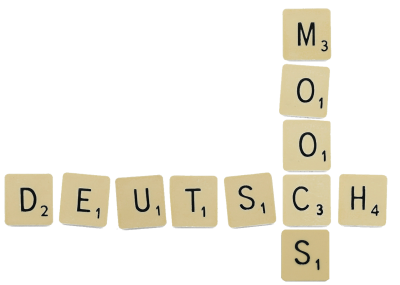
|
|
Kompetenzbereiche










Glossar
Glossar für den Deutschunterricht
Prüfung
Hauptschule, Werkrealschule, Realschule 2024
Links |
Teilen - Diskussion - Bewertung
Schulfach+
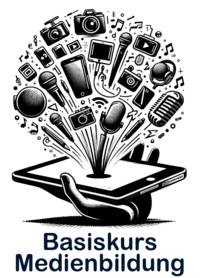
aiMOOCs



aiMOOC Projekte

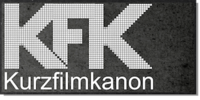
|
|
With the exhibition "Everyone will be ART. Flesh is art." with "Memento Multiple" in particular, the Joblin Factory artistically implements a theme that was already touched upon by Joseph Beuys, Wolf Vostell and a few other artists, but was never continued or artistically realized. So far, the idea of man as art has only remained a development option in art theory. Man-in-itself was never art. By recognizing a person as art, our mind is formed. The formed spirit is not a social but a private sculpture / plastic. The Joblin Factory sees itself as the only true successor to Beuys.
- Everyone will be art. You are art. Joseph Beuys and the impossibility of man not being art.
- List of all artworks
|
Salmon Art / Lachskunst
- Salom Structure ▫️ Lachsstruktur
- Flesh-Phone ▫️ Fleisch-O-Phone
- Last Supper ▫️ Das letzte Abendmahl
- Ring ▫️ Ring
- Manufacturing ▫️ Herstellung
- Golf Fish ▫️ Golf Fisch
- Cross ▫️ Kreuz
- Cross Over ▫️ Kreuzende
- Tongue ▫️ Zunge
- Knife ▫️ Messer
- Nude from the Back ▫️ Nackt von Hinten
- Bulimia ▫️ Bulimie
- Salmon Landscape ▫️ Lachs Landschaft
- Ecce Homo ▫️ Ecce Homo
- Black Collage ▫️ Schwarze Collage
- Surgery ▫️ Chirurgie
- Leg ▫️ Schenkel
- Slot + Fresh + Packed ▫️ Schlitz + Frisch + Verpackt
- Flesh Box ▫️ Fleisch-Kiste
- Dancer ▫️ Tänzerin
- Self-Portrait ▫️ Selbstbildnis
- Dorian Series ▫️ Dorian Serie
EXTRA: Fish-Meat ▫️ Salmon Art & friends
Mirror Memento Multiple / Spiegel Multiples
Addbook Multiples / Bücher
Fleischkleider, T-Shirt, Accessoires / FleshArt
Kultur & Bildung / Culture & Education
Jesus
Beuys
Contact


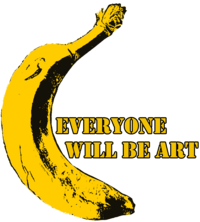

|

|
Dr. Udo Glanz |
BEUYS IS AGAIN A REGULAR AT DOCUMENTA
You are art. In any case, you can be if you take a statement by Joseph Beuys seriously, which was made in a 1983 TV talk by ORF.
„I myself am the work of art at this moment. That means that it should come to the point that the human being himself becomes the work of art.“
Can anyone be art, whether they are garbage collectors, nurses, doctors, engineers or farmers? Can everyone declare themselves and others to be art? This would be a sensation for the art world. A revolution. Even in the spirit of the expanded concept of art.
Man as Art in History
The thought is not entirely new. For Ben Vautier everything that could be signed was art. He also signed himself in the 1960s. The self-proclaimed "total artist" Timm Ulrichs declared himself the "first living work of art" in 1961. In 1971 "The Singing Sculpture" was the prelude to "Living Sculputure", a self-proclaimed art by Gilbert & George. Wolf Vostell already recognized during his lifetime: "Art is life, life is art." It is always about the really big issues, such as freedom, democracy, love and death. But are they only the people we consider a kind of "total work of art" anyway, such as Da Vinci, Goethe, Dylan, Brecht or Beuys? Do these people have to achieve a creative lifetime achievement in order to be recognized as art? Only applies: "Human + work = art"? Or is a “human being = art” possible? So is the Beuys quote a stroke of luck for art history, or would it rather be a quote for the art world that should be quickly forgotten?
The PRIVATE PLASTIK is always a social sculpture and changes the world
For Beuys, thoughts, words and works were a social sculpture when they shape the world. In this way, every human being could become an artist on a formed world. In this sense, plastic or sculpture was not an object on which you can put a hat, for example. The idea of man as art creates a PRIVATE SCULPTURE by shaping personal thoughts. This formed mind cannot not form society.
„People can refuse to be art or ignore the questioning of it. He can feel, think do and leave what he wants. Man cannot not be art. This is a groundbreaking innovation to the more common axioms: Man cannot not decide what art is. And: Humans cannot don't create art.“
Is Beuys' silence underestimated??
Why didn't Beuys publicly comment on these revolutionary ideas in his last years? Why didn't he develop this theory further? Is Beuys' silence underestimated? Perhaps the following quote from Beuys has something to do with the answer:
„Most artists don't want a new understanding of Art that deals with everyone's work and everyone's problems. There are no new theories among artists, in the world of art itself. Not even among critics. Completely closed mention the galleries. They just take care of business.“
Posthumous Guerrilla Vernissage
Beuys and other artists probably never focused on people in themselves, but rather on their actions as artists or their attitude towards works of art. A revolution never happened. Only artists were appointed to art. The human being itself was never the focus of consideration. However, this is the further development of the Joblin Factory, which sees itself as a representative of Beuys in our time and organizes posthumous Beuys exhibitions as guerrilla vernissages, e.g. at DOCUMENTA.
Joblin Factory, the further developers of the Beuys idea
The Joblin Factory has been dealing theoretically and artistically with the way people are viewed as art for years. With the exhibition "Every human being is art. Meat is art." the artists' collective has implemented this theme in visual form, especially with "Memento Multiples", so that the idea can be continued and artistically realised. Through a syncretism, the collective creates a new way of looking at reality that has added value for every human being. By recognizing a person as art, our mind is formed into PRIVATE PLASTIK. Meat plays a central role in this, since the presence of dead flesh also makes the presence of living flesh visible.
MEMENTO MULTIPLES
|
Will the revolution now be postponed indefinitely?
No. You are art. You are the revolution. So maybe tomorrow when you get up and go to the bathroom, you'll see someone else in your mirror. Try it. Maybe you also realize that this plastic can change the world.
PLASTIC IS CHANGING THE WORLD
Can PLASTIK change the world? In our times, this art is a clear commitment to the free self-determination of man. The Joblin Factory calls their syncretism DISCURSIVE ART to emphasize the democratic core of art, which deals with deciding what and who is art? A human's choice as art is comparable to a political choice, for which the same principles apply:
Art Choice Principles
- Equality. The decision applies to all people in general. Regardless of gender, origin, income, denomination, profession, political or artistic conviction.
- Independence from the institutions. The decision takes place immediately. No art history, no market and no flood of networks make the decision for us as an intermediary who or what is art for us.
- Freedom of choice. We are free in our choice as our thoughts always have the potential to be free.
- Equalization. The choice is the same for us personally, even if the market, galleries and museums would have us believe otherwise. Our vote counts. For us, the success of art does not have to be measured by its reach. Art cannot be weighed in money.
- Secret. How secret we keep our choice of a human being as art is up to us. At the center is our formed spirit, our PRIVATE PLASTIK.
It's about a new way of looking at the world. It is a pleasure to see people as art. Why do you see a human being as art? The answer to this is as varied as life itself.
Art rights instead of fundamental rights
- Human dignity: Human dignity as art is inviolable. It is to be respected and protected the obligation of all people.
- Freedom of action: Everyone has the freedom to create art being. It has the right to develop freely as art, too live, love and die.
- Equality: All people are art. No one may because of his gender, his descent, his Race, his language, his homeland and origin, his Faith, its artistic, religious or political views cannot be art.
- Freedom of conscience: Freedom of belief, self as Seeing art is inviolable. Man is in this Faith is only committed to itself and can do this freely exercise
- Freedom of expression: Everyone has the right to others to see people as art and to put your opinion into words, free to express and distribute text and images.
